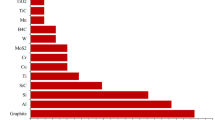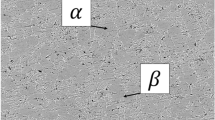Abstract
This paper studies the effects of tool electrode ultrasonic vibration on some surface integrity properties of cemented tungsten carbide (WC-10%Co) in the electrical discharge machining (EDM) process. Surface integrity concerns surface alterations associated with a manufacturing process, including surface topography, surface metallurgy, and changes of the mechanical and physical properties of the material as well as residual stresses. Scanning electron microscopy (SEM) with energy dispersive X-ray (EDX) capabilities, optical microscopy, micro-hardness testing and white light interferometric microscopywere employed to study the surface integrity. This paper studies the topography of the machined surface, the size and amount of cracks on the surface layer, hardness variation in the depth and the composition of the defective layer, when machining with and without ultrasonic vibration of the copper electrode under different machining conditions. SEM, micro-hardness testing results together with surface topography investigation showed ultrasonic-assisted EDM applicability in improving surface integrity.
Similar content being viewed by others
References
Rebelo JC, Marao Dias A, Kremer D, Lebrun JL (1998) Influence of EDM pulse energy on the surface integrity of martensitic steels. J Mater Process Technol 84:90–96
Abdullah A (1989) Voltage injection and performance evaluation in EDM. Ph.D. Thesis, The Victoria University of Manchester
Zolotykh BN, Korobova JP (1964) Selection of the optimum conditions for the electro-spark machining of cermets. In: Lazarenko, BR (ed) Electro-spark machining of metals 2:79–84, , Consultants Bureau Enterprises, Inc. New York
Chetverikov SS, Foteev NK (1964) Electro-spark machining of the cutting elements of sintered carbide blanking and piercing dies. Electro-spark Machining of Metals 2:85–101, Edited by Lazarenko, B. R
Gadalla AM, Tsai W (1989) Electrical discharge machining of tungsten carbide–cobalt composites. J Mater Process Technol 72(8):1396–1401
Lenz E, Kets E, Konig W, Wertheim R (1975) Cracking behaviour of sintered carbides during E.D.M. CIRP Ann 24(1):109
Verkhturov VD, Minakova RV, Teodorovich OK, Flis AA, Isyban VA (1983) Tungsten carbide composites and their electro-erosion resistance in electric spark machining. Poroshk Metal 7:75–80
Lee SH, Li XP (2003) Study of the surface integrity of the machined work piece in the EDM of tungsten carbide. J Mater Process Technol 139:315–321
Lee SH, Li XP (2001) Study of the effect of machining Parameters on the machining characteristics in electrical discharge machining of tungsten Carbide. J Mater Process Technol 115:334–358
Kremer D, Lebrun JL, Hosari B (1989) Effects of ultrasonic vibrations on the performances in EDM. CIRP Ann 38(1):199–202
Murthy VSR, Philip PK (1987) Pulse train analysis in ultrasonic assisted EDM. Int J Mach Tool Manuf 27(4):469–477
Zhixin J, Jianhva Z, Xing A (1997) Study on new kind of combined Machining and electrical discharge machining. Int J Mach Tool Manuf 37(2):193–199
Lin YC, Yan BH, Chang YS (2000) Machining characteristics of titanium alloy (Ti-6Al-4V) using a combination process of EDM with USM. J Mater Process Technol 104:171–177
Gopal SU (1998) Cemented tungsten carbides, Production, Properties, and Testing. Noyes, Westwood
Young FR (1999) Cavitation. Imperial College Press, London
Mukasa S, Nomura S, Toyota H (2004) Measurement of temperature in Sonoplasma. Jpn J Appl Phys 43(5B):2833–2837
Flannigan DJ, Suslick KS (2005) Plasma formation and temperature measurement during single-bubble cavitation. Nature 434:52–55
Norton S (2003) Can ultrasound be used to stimulate nerve tissue? Biomedical Engineering Online, DOI 10.1186/1475-925X-2-6
Abdullah A, Shabgard MR (2005) Effect of Ultrasonic Vibration of tool on electrical discharge machining of cemented tungsten carbide (WC-Co). International Manufacture Engineering Conf., Iran
Scussel HJ (1992) Friction and Wear of Cemented Carbides. ASM Handbook 18:795
Fukumiya Y, Haga Y, Nittono O (2001) Thermal stability and hardness of metastable Co-C composite alloy films. Mater Sci Eng A312:248–252
Eubank PT, Patel MR, Barrufet MA, Bozkurt B (1993) Theoretical models of the electrical discharge machining process. J Appl Phys 73(11):7900–7909
Author information
Authors and Affiliations
Corresponding author
Rights and permissions
About this article
Cite this article
Abdullah, A., Shabgard, M.R., Ivanov, A. et al. Effect of ultrasonic-assisted EDM on the surface integrity of cemented tungsten carbide (WC-Co). Int J Adv Manuf Technol 41, 268–280 (2009). https://doi.org/10.1007/s00170-008-1476-7
Received:
Accepted:
Published:
Issue Date:
DOI: https://doi.org/10.1007/s00170-008-1476-7




